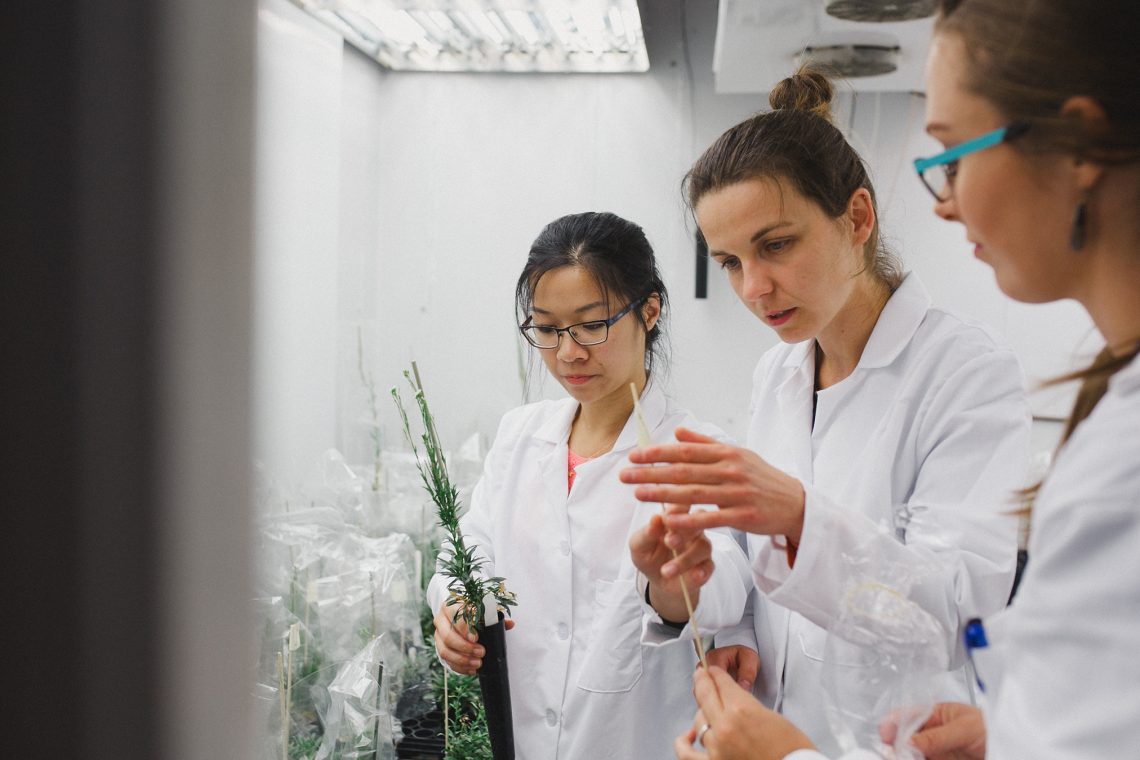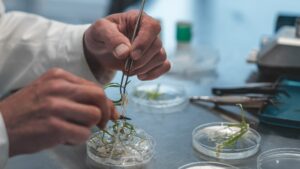Why a method of asexual seed production called apomixis could be a key to feeding the world.
Many consider it one of the most important questions facing the world today: How to feed the 9 billion people expected to populate the planet by 2050? Answer: Eliminate sex from agriculture.
That’s the vision of Tim Sharbel, a world leader in the study of asexual seed production known as apomixis. Born and educated in Montréal, Canada, Sharbel spent 20 years doing pioneer work in Germany before moving back to Canada last year to help launch an apomixis research program at the Global Institute for Food Security at the University of Saskatchewan.
Apomixis is a naturally occurring phenomenon in certain types of plants such as St. John’s wort and Kentucky bluegrass, which reproduce seed asexually, whereby all offspring are genetically identical to the mother plant.
It isn’t found in any food crops — but if apomixis could be successfully introduced into agriculture, Sharbel says it could be a disruptive technology. Essentially, it would enable the immediate fixation of any desired genotype and lead to faster, simpler breeding schemes.
“People have been studying the biology of these asexual plants and animals for 100 years or so, but it’s only 20 or 30 years ago that people started thinking about it in terms of agriculture,” he says. “There are a number of laboratories around the world studying apomixis. It’s worth billions of dollars if we can get it working.”
Through their applied work on apomixis, Sharbel and his team are uncovering clues to this evolutionary puzzle. Their research encompasses population genetics and evolutionary theories, functional genetics and an assortment of technologies such as high throughput phenotyping, genomics, proteomics and genome editing to carefully analyze reproduction in asexual plants (typically hybrids or polypoids) and apply that knowledge to food crops.
Sharbel’s research involving plants in the wild Brassica genus Boechera has resulted in the isolation of two genes, APPOLO and UPGRADE, which appear to have pivotal functions in the transition to apomixis. Variants of the genes are being tested in canola.
“We’ve advanced very rapidly and have identified some candidate genes that we’re working with,” Sharbel says. “Proof of concept is where we’re at. We’ll know within six months if the genes are actually working.”
High Risk Research
Sharbel, who describes his work as “high risk,” says it’s difficult to predict the results of his testing, since apomixis is such a complicated form of reproduction. “It could work right away or it could take another five years, or longer,” he notes, adding his team has similar projects underway with other crops such as corn, chickpeas and lentils.
So why is it such a game changer? Sharbel says growers who now choose to buy pedigreed seed every year from seed suppliers could conceivably only have to buy seeds with the enhanced traits they’re seeking just once.
“Think of apomixis as a switch to turn sex on or to turn sex off,” he says. “If we had that switch and could use it, then the farmer would get his first generation hybrid seed, which produce these hybrids that propagate clonally. Those first generation hybrids will produce genetic copies of themselves and subsequent generations.”












